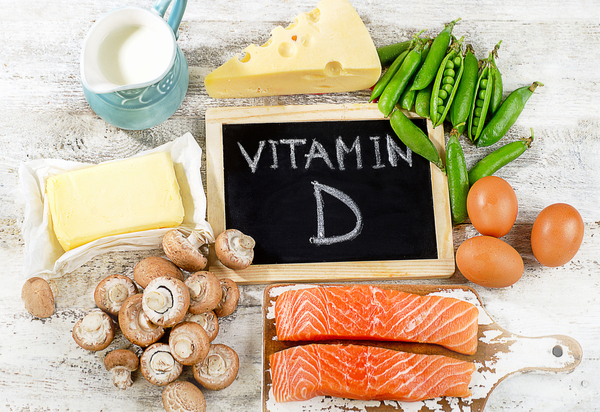
Vitamin D is actually not a vitamin, but a hormone that regulates calcium levels in your body. It is absorbed by the liver and kidneys and converted into its active form, calcitrol. Many people are low in Vitamin D because we don’t get enough sun light before 10 am and/or do not take adequate supplementation. We as a society do not get outside often enough, which could contribute to lower Vitamin D levels in our population.

The amount of time you need in the sun can vary between 5-30 minutes a couple times a week depending on your skin type. Lighter skin tones should have shorter times out in the sun due to risk of developing skin cancer over time with too much unprotected exposure. Some Vitamin D can still be made through skin protected by sunscreen. The best types of sunscreens to use are biodegradable and with the active ingredient being zinc oxide and/or titanium dioxide. Darker skin types need more time in the sun because the presence of melanin makes the process of making vitamin D more difficult.
Adequate levels of vitamin D may help prevent certain types of cancers, particularly: prostate, breast, and colon.
The best way to tell if you have low vitamin D levels is to do a blood test. However, there are signs and symptoms to look for that may indicate you may be low in vitamin D:
Bone loss – this is normal as we age, but you may have rapid bone loss if you are deficient in Vitamin D, putting you at a greater risk for osteoporosis.
Musculoskeletal aches and pains – since Vitamin D supports strong bones, low levels may be a reason why you have chronic aches and pains.
Fatigue – this is actually a common symptom of low vitamin D levels.
Depression – sunlight helps with elevating the mood and not getting enough of it may lead to low vitamin D levels, which may make you prone to depression.
Fall ill often – Vitamin D helps to boost the immune system, and if you have low levels of this hormone, you may be vulnerable to getting sick more often than you would like.

The best food to eat that is high in Vitamin D is fish. It is best to avoid the fish that is farm raised and with the highest mercury content: shark, swordfish, king mackerel, tuna, orange roughy, marlin, Chilean bass, lobster, halibut, and snapper. You may freely eat the fish with the lowest mercury content: clam, ocean perch, Alaskan salmon, tilapia, flounder, sole, and catfish.
You also want to make sure you are getting the Vitamin D3 form, as this is the most active form you can take. Magnesium is a key mineral in the activation of vitamin D. Make sure you talk to your doctor about getting adequate amounts of both and to ensure that you are not over loading on either of them. There is actually a risk for having too much Vitamin D in your system, which is why testing and keeping track of your levels is very important.
Another reason you may have low vitamin D levels is that you’re not absorbing it through your gut. If you tend to have GI issues, it will affect your ability to absorb nutrients and supplements. Talk to your Naturopathic doctor about getting your gut healthy so you can optimize the nutrients you are taking in.

Remember, you have the most important role in your overall health. Get outside in nature and move your body more, eat whole and unprocessed foods, and supplement when necessary (as advised by an appropriate practitioner).
If you need further one on one assistance, talk to one of our WHEN Health Advisors® to help guide your way. Your new WHEN Health and healthier way of life is NOW!
Monica Vaghela, ND
Director of WHEN Health Area, Naturopathic Physician (ND). WHEN Health Advisor®
Resources: